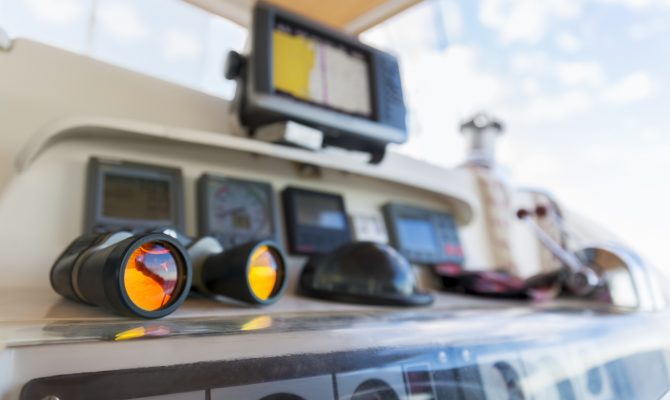Marine Radios
Virtually every marine VHF radio sold today has Digital Selective Calling (DSC) capability. But the Coast Guard recently reported that almost 90 percent of DSC radio owners don’t bother programming their units, effectively removing the radio’s most significant benefit: automated distress calling, along with all its other bells and whistles for which you paid.
There are two things you can do to get the most from your VHF. First, hook it up to your GPS, so it will have position information if you need the automated mayday function. (Newer radios usually have built-in GPS, so you may even be able to skip this step.) Next, go online to BoatUS and register your radio, obtaining your nine-digit Maritime Mobile Service Identity (MMSI) number. It’s free!
MMSI numbers are vessel-centric rather than owner-oriented. Follow the directions that came with your radio and input your vessel information. Be sure to do this carefully, as in many cases, if you type in a wrong number, the unit must be sent back to the factory to be reset. Then, in an emergency, simply push the red mayday button on the face of the VHF and the Coast Guard automatically receives your name, vessel information, emergency contacts and vessel location — providing you are within broadcast range. If not, use your EPIRB or PLB.
DSC offers other features you’re likely to use much more often than mayday (hopefully). You can keep track of your friends’ vessels and even conduct totally private VHF conversations with them if you know their MMSI numbers. Unlike a regular VHF broadcast, where anyone listening can hear you, DSC calls operate like cellphones. You can also “text” a group of vessels whose MMSIs you’ve noted on your radio. Alert your friends to a productive fishing spot without sharing the info with anyone else!
Depth Sounder
If you’ve ever bumped bottom even though your sounder said you still had 2 feet beneath you, you probably didn’t adjust the keel offset for your specific boat. Sounders offer two setting possibilities: depth below the transducer and depth below the keel. I’ve always found the latter more useful.
Measure the distance between your transducer and the bottom of your keel. Follow the instructions in your manual for keel offset. When you get to the point where it asks for desired depth offset, set the depth as your measured distance. In other words, if there’s 12 inches between the transducer and your keel, set the offset at 1 foot. That way, you’ll always know accurately how much water you have between the bottom of your boat and solid ground. From that point onward, all your depth alarms (warning of shallow water or anchor dragging) will automatically be based on depth below your keel as well.
Every sounder today features automated sensitivity tuning. However, this function may not always serve you best. Think of yourself standing in a canyon. If you say “hello” in a normal tone, you probably won’t hear an echo. Shout it out, and you will. If your sounder sends out a modest signal with average sensitivity settings, you may or may not get a decent reading in deeper water. Turn up the power and sensitivity, and your returns improve. Turn those functions up too much, though, and you’ll get lots of clutter on your screen.
To optimize your view at a given depth, turn the gain and sensitivity all the way up and then back them down until the clutter disappears. That’s the best setting for that depth and water condition. This same practice will improve your unit’s performance in shallow water on targets at the outer edges of your sonar beam.
Ship’s Systems
One of the big issues with digital monitoring is that sensors often need a benchmark to perform correctly. For example, something as simple as a fuel gauge frequently gets taken for granted. Turn on the keys and you can see how much fuel is in the tank, right? Well, that may not be the case unless you tell the system where full is. Your first time out, you’ll need to fill the fuel tank and then program the sensor to read that as full.
Ever notice how your compass and chart plotter disagree on the direction you’re heading? Chances are the GPS compass reads pretty accurately, though some will initially ask you to steer your boat in a circle a few times to orient it. More often, your magnetic compass (which, yes, you still need) has not been “swung.” Magnetic compasses are affected by electrical wiring, nearby metals and geographic location. If having everything work correctly is important to you, hire a compass adjuster to check yours for variation and deviation and everything on your boat that might interfere with its readings.
Knowing that your instruments can be trusted adds dramatically to your boating enjoyment by lowering your stress level underway.
Author: Dean Travis Clarke is a regular contributor to HeartLand Boating magazine




